He’s the hunchbacked court jester to the Duke of Mantua, in this staging a 1930s punk tyrant. The jester is renowned for a tongue as barbed and pointed as any stiletto in His Grace’s employ. But, hump aside (and few Rigolettos bother with a visible hump nowadays), he has one weak spot: his pure and innocent daughter. She’s in town on a visit and she’s curious about, you know, boys. Coronet or no coronet. This cannot end well, for anybody. (The heartless Duke comes off okay.)
What this role needs is a Verdi baritone, a baritone who can threaten and snarl, and sigh in romantic nostalgia when his daughter wants to hear about her mother, and then woo courtiers, weeping, when they have the upper hand for once. A big sound capable of urgent sentiment or explosions of self-poisoned fury. We haven’t had a Rigoletto like that for a while, but if we’re going to do this perfect opera, we need a Rigoletto who can terrify us and make us sorry for him the next moment. It is a role on which Verdi feasted his creative resources: the man you despise and pity from the bottom of your soul.
La Cieca used to say “Don’t stage the overture!” but that proverb has been ignored in the age of HD video. The moment Rigoletto appeared on stage during the opera’s brief prelude, just a weary actor on his way to enter the back door of a theater, there was sharp, eager applause throughout the Met for Quinn Kelsey. He was the man everyone had come to hear, and the plaudits briefly stopped the show. I haven’t seen that sort of thing during an overture at the Met before, and I don’t approve of it now.
But Kelsey is a recognizable favorite, he has the voice and the presence and the posture, thrilling and moving by turns, furious or bel canto, of a Verdi star. Like everyone else, I’ve missed such baritones, and I want to hear him in all the big Verdi roles. We are, after decades of drought, in a happy flood nowadays of fine, masculine baritone sound.
This staging did not permit him to make too much of “Pari siamo,” but his duet with Nadine Sierra’s Gilda was suave and appealing. The hurdle of his mood-swing from raging “Cortigiani!” to the despairing plea to the crowd that has kidnapped his daughter was elegantly handled, and the outburst of “Si, vendetta” properly venomous. I could have used a bit more madness here and there, so that we focus on his despair and the horror of his ultimate fate, but then the inane staging of the final act cut everyone’s character down.
Kelsey has earned his proper place with the lovers of Verdi. The beauty of his voice and the intensity of his acting are what the genre calls for. As his confidence and experience increase, I hope we may see more dramatic chances taken. I expect we shall have a Macbeth, an Iago, a King Carlo, a Montforte, a Miller, a Barnaba, a Gerard out of him, and I hope to be there when it happens. All New Yorkers who love—and have missed—Verdi should be there.
I often advise those seeking a first-time opera—for themselves or for curious friends or suspicious children—to choose Rigoletto. The piece will suck you in in the best sense. If you have a good cast and a good production, the show will matter to you. The story is clear, the emotional punch properly packed, the tunes guide every feeling, and they are all great tunes—there is no wastage, nothing to cut or nap through, except perhaps the Duke’s cabaletta—and even that, a major change of mood, can be made to matter.
So to the present occasion, the revival of Bartlett Sher’s production of Rigoletto (which premiered on New Year’s Eve, 2021) at the Met, succeeding the notorious loved and hated “Las Vegas” production.
The set is a square on a turntable. Michael Yeargan’s central hall is a many-pillared hall in Mussolini moderne, complete with flowing-haired frieze and busts of Roman emperors. Catherine Zuber has gone to town with slender, floor-length ladies’ gowns (the ladies’ chorus does not appear in Rigoletto, so she could get away with slim silhouettes), and the men are in beribboned uniforms.
Slithering up to the cube in later scenes are two slummy additions, a three-story rooming house (it looks like) as the house where Rigoletto keeps his daughter and the two-story inn where Sparafucile keeps his sister. All well and good. The first three scenes play out as written; the Countess Ceprano (Susanne Burgess) a little more whorish than she might be, the Giovanna (Eve Gigliotti) a bit quick to decide the whole situation is going to hell, so she packs her bag and heads for the hills. But Gigliotti misrepresents herself with great charm and self-knowledge.
The staging didn’t really annoy me until Act III. Verdi—or rather, his librettist, Carlo Maria Piave, has been very specific about this, and Verdi followed suit. If you do what they tell you, the result is clear, focused, intense, explosive. The very simplicity appears to have offended Sher or perhaps the Revival Stage Director Sara Erde, who between them have done their very best to render opaque and strange that which is simple and clear. Maybe they felt Gilda needed more “agency.” They’ve already had her slapping her kidnappers.
The quartet should be a seduction overheard, but not in this version: the Duke has already screwed Maddalena (on stage, in full view) and they are continuing a post-coital flirtation, plus pillow fight. Since the Duke is done, he walks out (Verdi has him doze off), though Rigoletto has paid for his assassination, and Maddalena has nothing but sloppy seconds to hope for.

What, then, are Sparafucile and Maddalena arguing about, since the Duke has already waltzed off? And what argument does Gilda overhear? Why does she sacrifice herself since the Duke has departed? Not that it matters—instead of allowing herself to be slain in her lover’s stead, this Gilda stabs herself. Sparafucile, though innocent of wrongdoing, wraps her up and hands her corpse to Daddy. Daddy hears the Duke singing—but why? Where is the Duke? He’s not in the bedroom. Is he on the wireless?
None of the final act made any sense in Sher’s staging. “We have a clear, powerful denouement here! Devastatingly effective since 1851! Let’s mess it up! Why not give Maddalena a dose of consumption? Or have Gilda give birth so Sparafucile can toss her baby into the fire?” Frankly, considering how they’d trashed the story already, I was surprised not to encounter these other variations.
Nadine Sierra has said she plans to give up Gilda, and on the evidence, this is a wise decision. Her “Caro nome” is not a lacy showpiece but the calculated self-portrait of a very fine lyric soprano. The voice is larger than traditional Gildas, sung with a fuller sound. There is depth to it. If the high notes are not all of them there, she makes no attempt to launch the ones not easily at her disposal, and her acting was of such character that she had us all on her side. Her trills were rather pitchless, not worthy of the luscious instrument and clear line evidenced otherwise, but her farewells to Gualtier Maldé—sung through a locked door—were winningly silly. She had passion for the duet at the end of Act II, when the usual Gilda sometimes has trouble summoning sufficient sound. This is a voice one can easily imagine as Manon or, for that matter, Manon Lescaut. And her final phrases in her father’s arms were not faint wisps but urgent cries.
Stephen Costello’s Duke replaced a narcissistic seducer’s energy with a blandness, a reticence that seemed out of place—he always seems to sing as if he’s not sure he should be there at all. Yet I noticed a certain increase in heft, a maturity of sound are steps in the right direction. His high notes tend to bleat, but he bleats on the proper pitches.
Soloman Howard, whose deep bass has been effective as Pharaoh but who found the Padre Guardiano too much for him in last year’s Forza, was back on track as a saturnine Sparafucile in his first scene, a satisfying wallow in threat. But the staging of the final scene deprived him of any effectiveness. J’Nai Bridges portrayed a lively Maddalena, but was a bit breathless in the quartet, perhaps because she and the Duke were already in bed in this version. Jordan Shanahan, the Monterone, was also too active to judge his singing properly.
Pier Giorgio Morandi rather pulled back on melodramatic climaxes, but his tempi moved at a proper, snappy pace from incident to incident to romance to cataclysm. The Met orchestra knew just how to follow his lead.
Photos: Nina Wurtzel
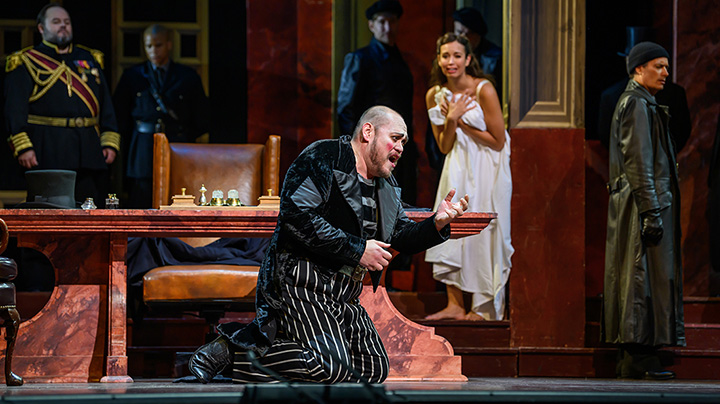
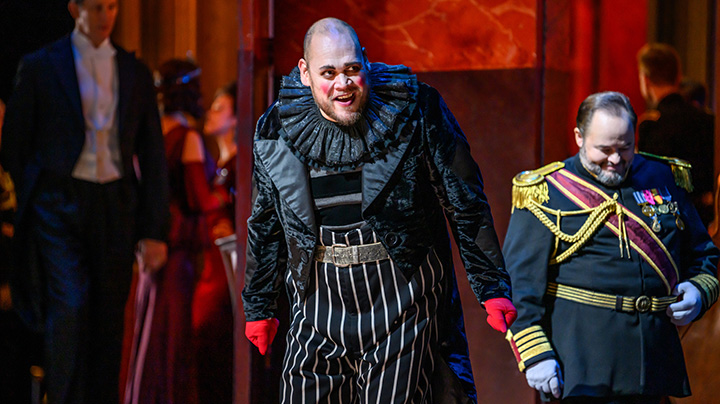

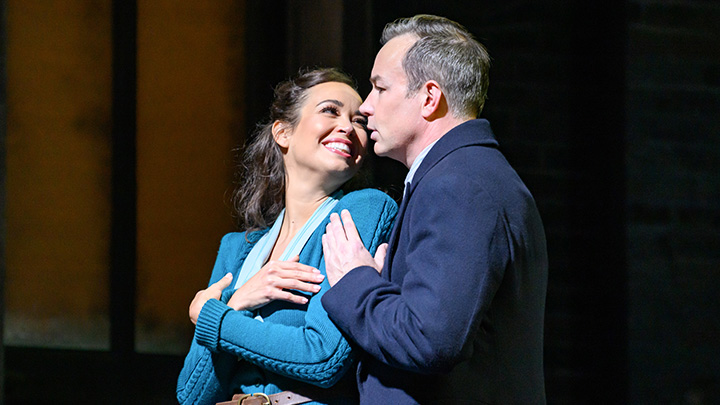
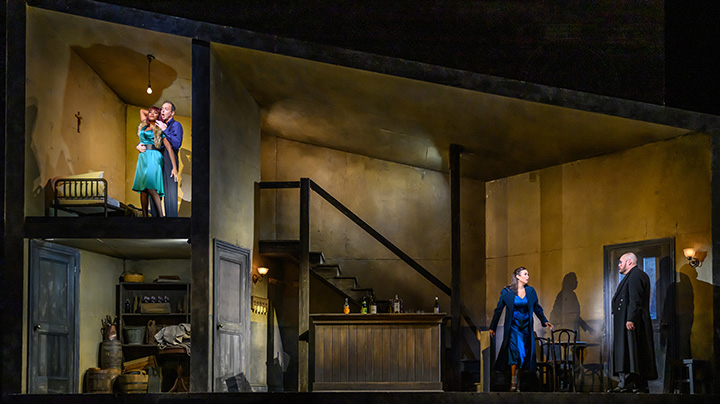
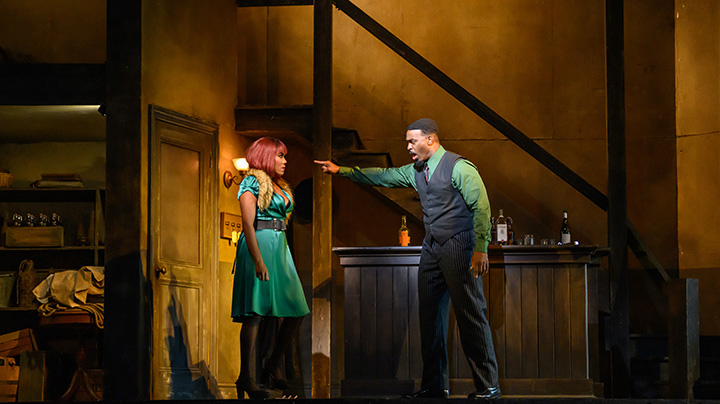




Comments